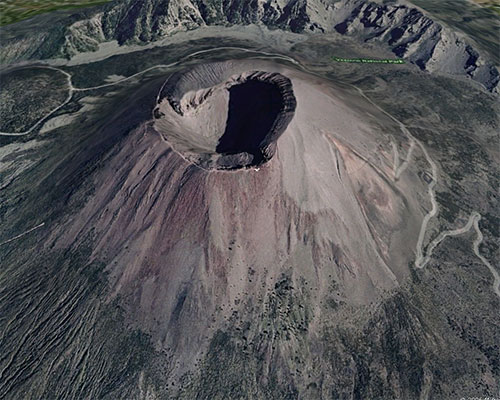Want to learn about the magnificent Mount Vesuvius Italy? Read ahead before you plan a visit to the glorious volcano of Mount Vesuvius Italy…
Mount Vesuvius Italy has a total elevation of 4,203 feet and lies in the Province of Naples in Italy. It is a large strata volcano with a Campanian volcanic arc. The rock has been dated to 25,000 years ago and it last erupted in 1944. The best way to navigate and explore this volcano is by walking the tracks up to the craters.
Location of Mount Vesuvius Italy
Mount Vesuvius gets its name from the Latin word Mons Vesuvius. It is actually the only volcano lying on the European mainland, which actually erupted in the past two centuries. There are two other volcanoes in Italy named the Mt. Etna and Mt. Srtomboli located on islands.
Mount Vesuvius is located on the Bay of Naples, which lies around 9 km towards the east of Naples on the coastal area and is close to the shore line. It is beautiful in terms of the landscape offered by the view from the bay and when you view the volcano from the sea you can actually see the city of Naples in the foreground.
The most famous eruption attributed to Mount Vesuvius dates back to AD 79 where it caused the massive destruction of the Roman cities of Herculaneum and Pompeii. The total number of residents who died during this volcanic eruption ranged from 10,000 to 25,000 inhabitants of the cities. Since that time it has erupted many times and till today is considered as a potentially dangerous volcano amongst the world’s volcanoes.
There are approximately 30,000 people living in its proximity who will be directly affected by its explosive eruptions. In fact, Mount Vesuvius Italy is the most densely populated region of the world that is centered on the circumference of a dormant volcano.
Importance of Mount Vesuvius to Greek and Roman Culture
The Greeks regarded it as a sacred entity for the hero for Greeks and Romans alike, named Hercules and hence had a town with his name commemorating it and built at the base of the volcano.
There are many theories purported about the origin of the name of this volcano and some of them relate to the Greek gods. The name roughly translates to mean the sun of one of the Greek gods, who was Hercules and by a small transliteration the name Vesuvius has been derived.
There is another theory that the word from the Oscan dialect called festf which means smoke, was the basis of naming this volcano. Apart from this there is a seemingly obvious connection between the Proto-Indian-European root linguistics for its name.
Physical appearance of Mount Vesuvius Italy
This volcano has a hunchback shape and a very large cone that is encircled partially by the caldera, which has a very steep summit and occurred when the older and higher structure of Monte Somma collapsed onto it.
The grand cone was developed in the eruption of A.D. 79 and the volcano is often referred to as the Somma-Vesuvius or Somma-Vesuvio. This name is basically used to describe the volcano which has a summit caldera surrounded by a newer cone.
Interestingly enough the Caldera started developing during the eruption that took place roughly 17,000 to 18,300 years ago and subsequently was enlarged by many paroxysmal eruptions, which continued until the year A.D. 79.





